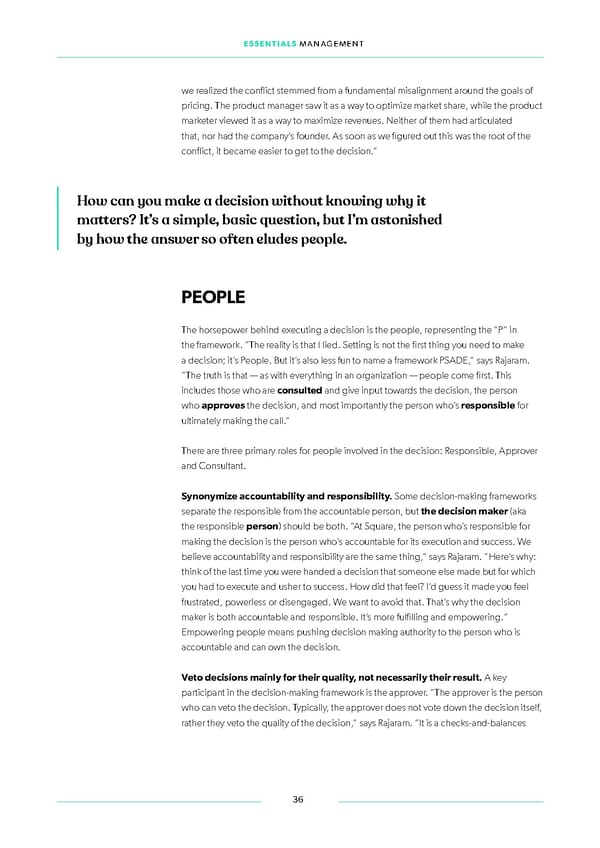ESSENTIALS MANAGEMENT we realized the conlfict stemmed from a fundamental misalignment around the goals of pricing. The product manager saw it as a way to optimize market share, while the product marketer viewed it as a way to maximize revenues. Neither of them had articulated that, nor had the company’s founder. As soon as we ifgured out this was the root of the conlfict, it became easier to get to the decision.” How can you make a decision without knowing why it matters? It’s a simple, basic question, but I’m astonished by how the answer so often eludes people. PEOPLE The horsepower behind executing a decision is the people, representing the “P” in the framework. “The reality is that I lied. Setting is not the ifrst thing you need to make a decision; it’s People. But it’s also less fun to name a framework PSADE,” says Rajaram. “The truth is that — as with everything in an organization — people come ifrst. This includes those who are consulted and give input towards the decision, the person who approves the decision, and most importantly the person who’s responsible for ultimately making the call.” There are three primary roles for people involved in the decision: Responsible, Approver and Consultant. Synonymize accountability and responsibility. Some decision-making frameworks separate the responsible from the accountable person, but the decision maker (aka the responsible person) should be both. “At Square, the person who’s responsible for making the decision is the person who’s accountable for its execution and success. We believe accountability and responsibility are the same thing,” says Rajaram. “Here’s why: think of the last time you were handed a decision that someone else made but for which you had to execute and usher to success. How did that feel? I’d guess it made you feel frustrated, powerless or disengaged. We want to avoid that. That’s why the decision maker is both accountable and responsible. It’s more fuliflling and empowering.“ Empowering people means pushing decision making authority to the person who is accountable and can own the decision. Veto decisions mainly for their quality, not necessarily their result. A key participant in the decision-making framework is the approver. “The approver is the person who can veto the decision. Typically, the approver does not vote down the decision itself, rather they veto the quality of the decision,” says Rajaram. “It is a checks-and-balances 36
 Essentials Management First Round Capital Page 35 Page 37
Essentials Management First Round Capital Page 35 Page 37